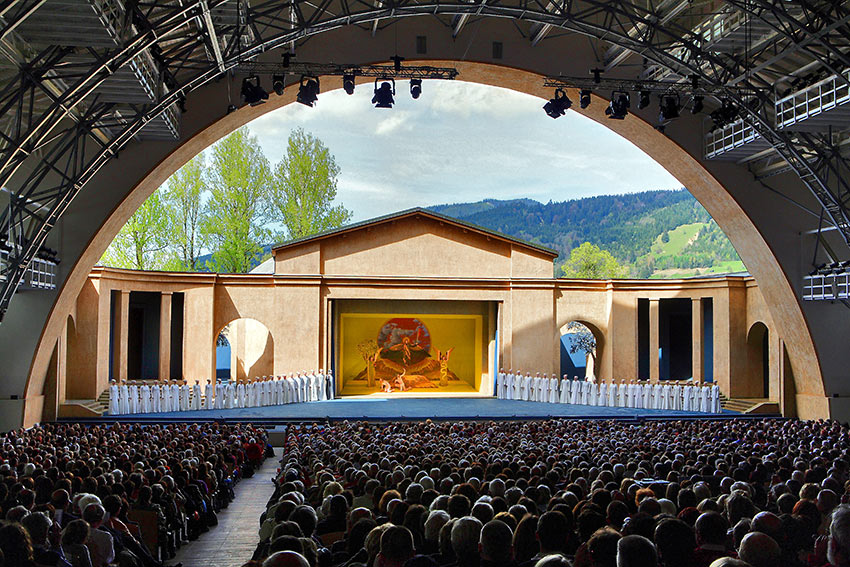
Curated by Ed Boitano
Happy Holidays, dearest readers. The T-Boy Society of Film & Music’s final poll for 2020 is dedicated to PILGRIMAGES: Sacred Destinations. We felt this would be an appropriate theme as we slide into the holiday season. Though 2020 is a year we’d like to have in our rearview mirror, it’s been a great year for T-Boy because of you.
You’ll find members’ selections to be deeply personal, reflective and educational; experiences that helped shape their lives. I know I did. Here’s looking for a spectacular 2021.
Happy Holidays!
— EB
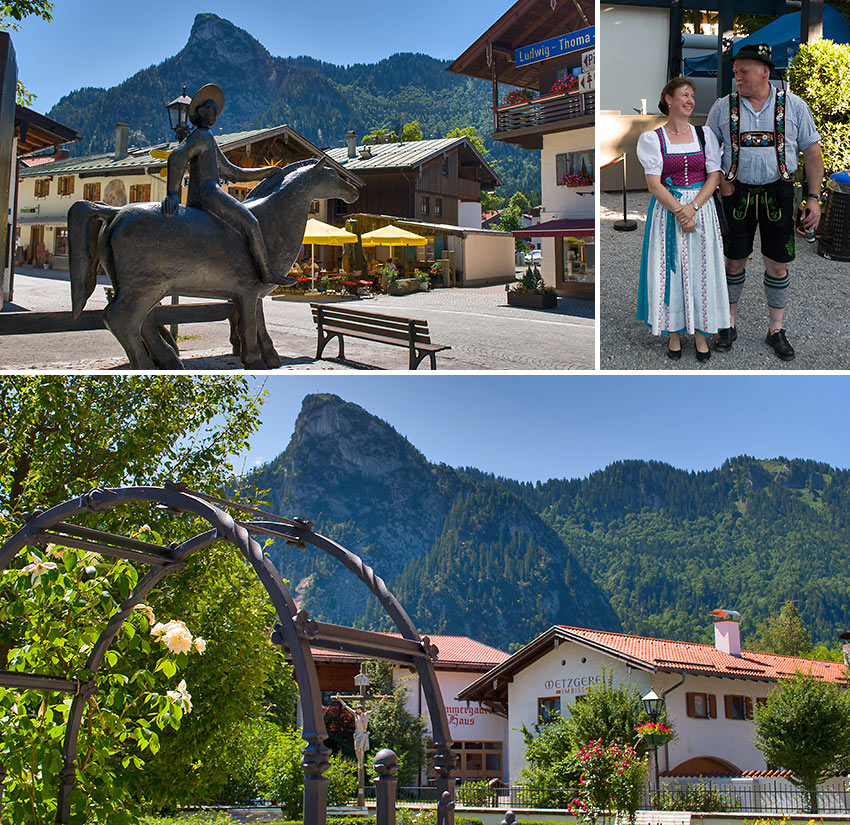
Richard Carroll — T-Boy Writer:
Oberammergau, Bavaria: The Black Plague
Tucked into a narrow mountain valley in the western foothills of the Bavarian Alps 42 miles southwest of Munich, the village of Oberammergau, circa 1150, opens its arms to thousands of visitors from throughout the world every ten years when the calendar falls on a decimal year. The village residents perform the historic Oberammergau Passion Play in gratitude for the demise of the Black Plague that in 1633 ravaged the village, and in the years before, a great extent of Asia and Europe as well. The most destructive and overwhelming pestilence in human history resulting in the deaths of an estimated 75 to 200 million people, the Plague is extremely contagious spreading in the air or by flea bite or through contact with someone stricken.
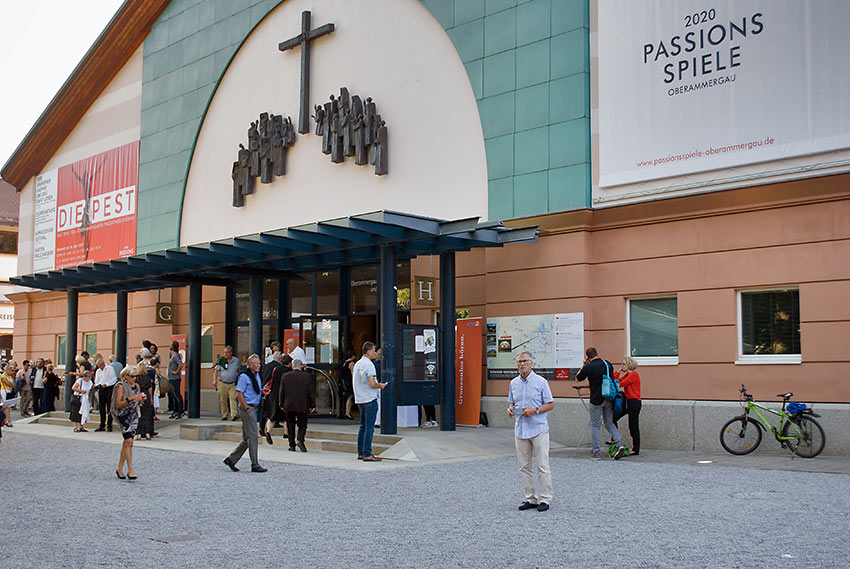
In 1633 the Plague mauled Oberammergau and, in desperation the village counselor pledge to perform a Passion Play immediately, and every ten years forever after, if there were no more victims. The pandemic passed and in 1634 Oberammergau honored their oath and performed the Passion Play for the first time in the cemetery on the still-fresh graves of the Plague victims with the oldest existing manuscript of the Passion Play text dating to 1662/1664.
More than half a million visitors from around the world enjoyed the play in 2010 and in 2020 was canceled due to the rampaging Coronavirus, this being an unusual and bizarre stroke of irony. Incredibly, some 2,300 Oberammergau villagers from a population of 5,000 are involved in the play, all as volunteers. A local law maintains that all performers, the actors, chorus, 65-member orchestra, and ushers, must have either been born in Oberammergau or have lived there for 20 years. For the people born and raised here, this is the heart and soul of Bavaria.
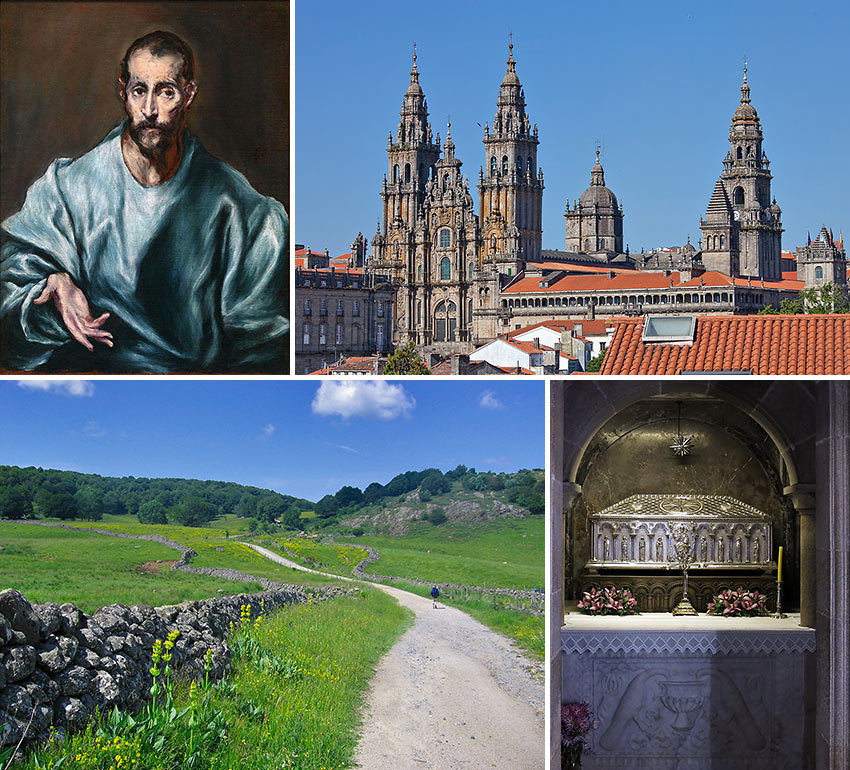
Richard Frisbie — T-Boy Writer:
Pilgrimage Through Spain to St James’ Tomb
There are many routes to Santiago de Compostella and the Tomb of St James. From the north, coming in from all over Europe, the routes converge on the tiny village of Saint-Jean-Pied-de-Port, on the French side of the Pyrenees. This is known as the French Route. It crosses the Pyrenees to Roncesvalles, famous for “The Song of Roland”, then comes down through the Basque region to Hemingway’s Pamplona, across the culinary Mecca of Castilla y Leon, and finally into Galicia, known as Green Spain, to St James Cathedral in the capital city, Santiago de Compostella.
Traditionally the entire 500+ miles is walked, or at the very least the last 100 or so. For my own Camino experiences, I walked only a few miles of it, bicycled more, and took a 10 day bus tour the entire length. On that tour, arrangements were made in advance for all the churches to be open when we got there, but many are rarely open, so a devout pilgrim on a less structured walk could easily get disappointed at missing so many religious sites.
While all the churches are significant, each in its own way, one stands out – the one with chickens in it. Yes, others had brilliant stained glass, incredible art, and amazing architecture, but the church with the white cock and hen was the best. They were descended from the original pair miraculously brought back to life on a corrupt magistrate’s dinner plate by St James to save a devout pilgrim’s life. Their presence reminds pilgrims of the power of prayer more than pretty windows ever will.
If you’re planning to make the pilgrimage, next year, 2021, is Xacobeo, a rare Holy Year when the Feast of St James, July 25th, falls on a Sunday. During Holy Year the east door of the Cathedral of St James is open and a record number of pilgrims are expected to travel the Camino and pass through it. Which means that now is a good time plan to be a part of history and a possible spiritual awakening. If nothing else, you’ll enjoy the beautiful Spanish countryside, meet warm and friendly people, and discover the culinary excellence of Spanish cuisine.
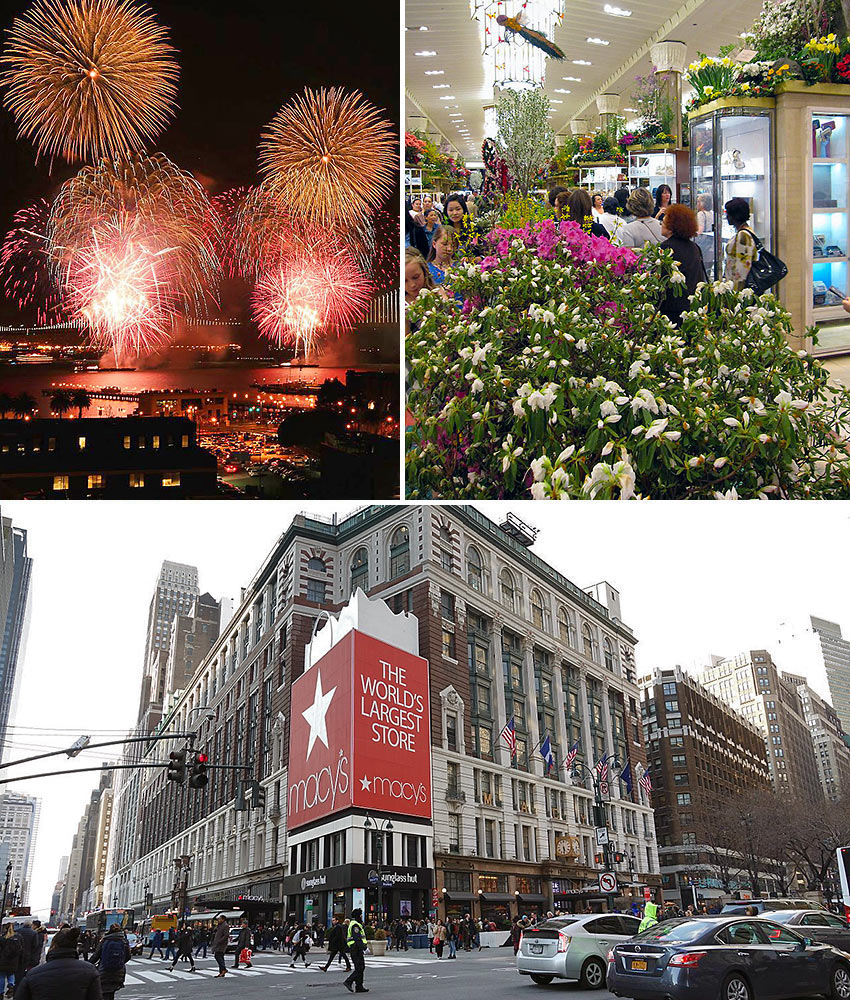
Susan Breslow – T-Boy writer:
Macy’s Herald Square
Can you love a sacred destination without acknowledging a god? Moslems have Mecca. Christians have Santiago de Compostela. Jews have the Western Wall. Free of religion, I’ve always loved Macy’s flagship, which is far more than a department store. Standing since 1858, it’s not only woven into the fabric of New York City; it’s part of its foundation.
Any day of the week, many places might lift your spirits when you’re alone – a movie, a museum, Central Park. Something to believe in, Macy’s will restore your faith in serendipity. Bargain-worshipers flock to the store during its frequent sales; encounter an item you’ve coveted at 75% off, and you can practically hear the angels sing when you plunk down the plastic. Hungry after your retail devotions? Starbuck’s, McDonald’s, and Carvel offer secular communion here.
While no longer the world’s largest store (the Samsung family owns a bigger one in South Korea), Macy’s annual celebrations are worthy of reverence and gratitude. Springtime brings the Flower Show, perfuming the Main Floor with an abundance of live blooms, plants, and trees from around the world. In other seasons, bottled fragrances conjure the lavender fields of France, Bulgarian roses, Tahitian gardenias.
Every July, Independence Day fireworks explode over the East River to fill the heavens with color and light. The Macy’s Thanksgiving Day Parade, with its larger-than-life balloons, elaborate floats, marching bands, and high-stepping Rockettes confirm the day. The only dud in the bunch is the puerile holiday windows. Like the treacly nonsense of Miracle on 34th Street, they’re best appreciated by seven-year-olds.
Even if you don’t celebrate, it’s hard to avoid Christmas at Macy’s. So one year I took my reluctant niece to visit Santa Claus on the Seventh Floor. He was a Black amputee who greeted us with a broad smile and asked our inner children what we wanted for Christmas. I wanted legs for him. I think I walked out with a velvet comforter.
This cornucopia of commerce holds many more things of beauty that evoke awe, from sleek furniture to diamond watches to intricately beaded gowns. Should I ever be in a plane about to crash, I wouldn’t call out for some god. I’d just clutch my Macy’s gel-infused memory foam travel pillow and hope for the best.
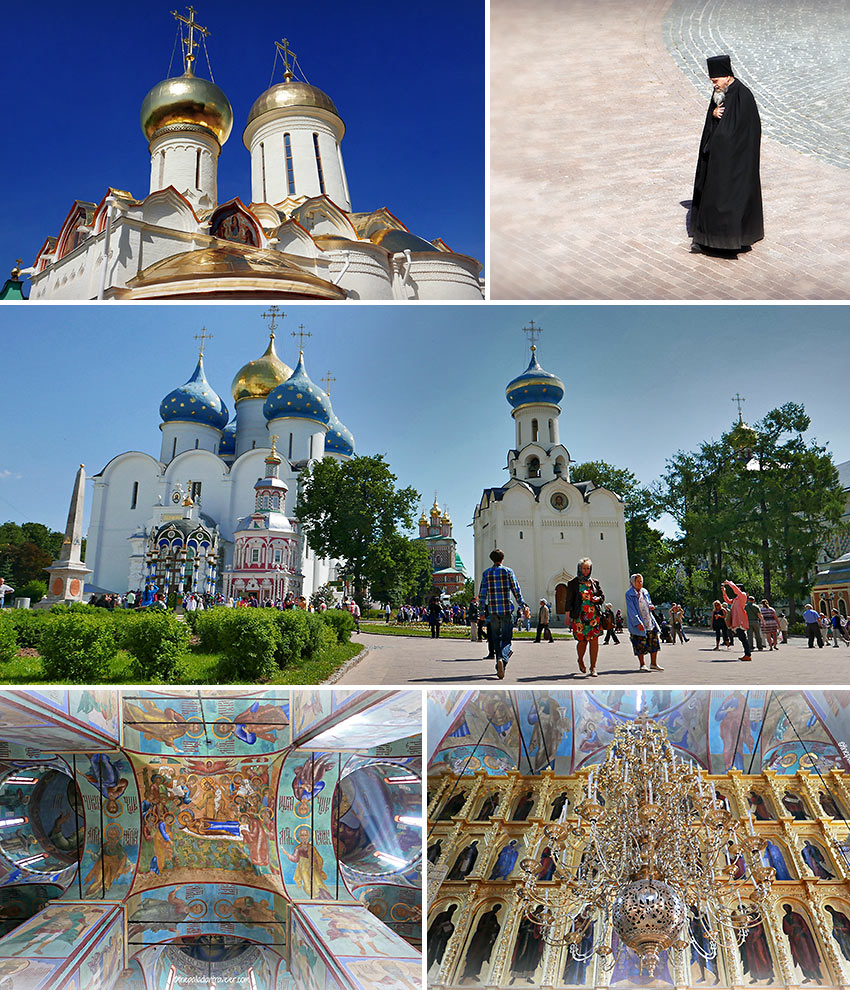
Tom Weber — T-Boy writer:
Russia’s Trinity Lavra
The most important monastery in all of Russia and the spiritual center of the Russian Orthodox Church is the Trinity Lavra of Saint Sergius. Named after one of the Church’s most venerated saints, it’s located about 70km (42 mi) northeast of Moscow in Sergeyev Posad, one of a group of ancient “open-air museum” towns that form the Golden Ring.
Founded in 1337 with the building of a simple wooden church atop Makovets Hill to honor the Holy Trinity, one of the cornerstones in the religious teachings of Russian Orthodoxy, this monastic community is now a UNESCO World Heritage Site, one of 26 areas so recognized around Mother Russia.
“In awarding World Heritage Site status,” comments the tour guide inside my earbuds, “UNESCO cited the Trinity Lavra as an outstanding and remarkably complete example of an active Orthodox monastery that was characteristic of the period of its growth and expansion between the 15th and the 18th centuries.”
This sacred destination, both spiritually and architecturally, is a unique ensemble of more than 50 buildings and constructions. An angelic park-like setting — absolutely spotless despite the foot traffic — Trinity Lavra is simply stunning with life-sized murals adorning many of the facades and a skyline filled with gilded onion-shaped domes and glistening bell towers.
Inside the nine churches and cathedrals of the monastery are scores of religious artifacts, paintings, ceilings filled with heavenly frescos and walls draped in iconostases.
The holiest spot of Trinity Lavra is inside Trinity Cathedral where the relics of St. Sergius, the monk from Radonezh who founded the monastery, may be seen, but not photographed.
Also noteworthy, the tomb of Boris Godunov, the tsar who ruled briefly between the Rurik and Romanov Dynasties, sits in the family mausoleum near the entrance to the monastery’s main church, the Cathedral of the Assumption.
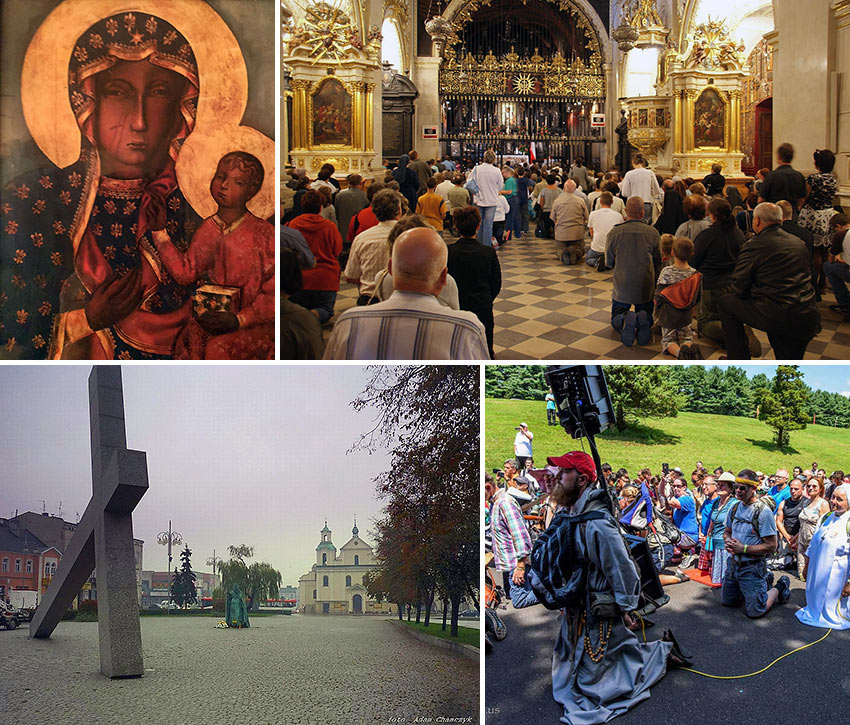
Halina Kubalski — Destination Photographer
The Black Madonna of Czestochowa
Born and raised in Warsaw, I have experienced the historic Czestochowa Pilgrimage three times, the first being when I was 11 years old. Czestochowa, pronounced (Chen-sto-ho-vah) is the spiritual heart of Poland and a national shrine, where some 4.5 million pilgrims from 80 countries journey to Czestochowa to honor The Black Madonna, also known as Our Lady of Czestochowa. Pilgrim groups walk an average distance of 217 miles in 11 days with water and food offered to them by the people in the villages along the way. A pilgrimage has left Warsaw every August 6th since 1711 for the nine-day, 140 mile trek, though during World War II it was at great risk of life if caught by the Germans.
The Jasna Gora Monastery, founded in 1382, and historic pilgrimage destination is the Sanctuary of the Black Madonna. The image on canvas was created most likely in the second half of the 13th century, others state it dates to 1430-1434.
My first visit with my mother was on a three-hour train ride, and upon entering the Sanctuary, I remember the pungent smell of candles, masses of people, all extremely quiet, and suddenly I hear the sound of music and ringing trumpets as a curtain slowly opens and everyone drops to their knees, and with help from my mother I could see the Black Madonna, then there was a standing Mass with everyone shoulder to shoulder. It was all so overwhelming with the beautiful gardens and a festive feeling in the large square. At that time it was only Polish visiting the shrine because we were under Russian occupation, but on the other visits it was a melody of languages and joy. After Mass, my feet were aching and it was a relief to have lunch in a nearby cafe. It seemed like a long walk to the train station but on the train ride home I felt truly uplifted. Working as a Destination Photographer, I’ve seen reproductions of the Black Madonna of Czestochowa in Barcelona, Mexico, Central America, Italy, Southern California, and other destinations throughout the world, all of which recall fond memories of my first visit to Czestochowa with my mother.
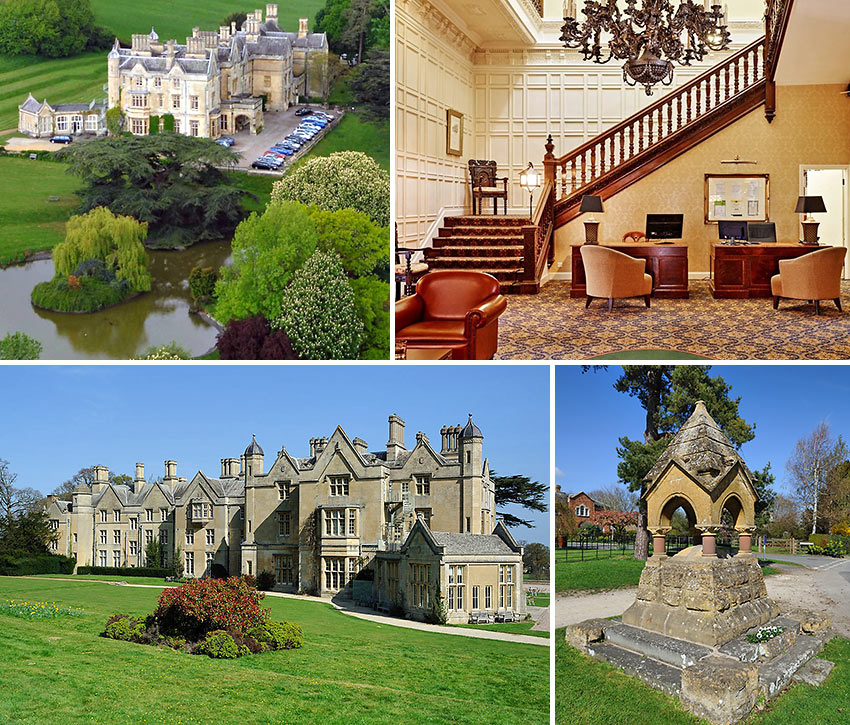
Stephen Brewer — T-Boy writer:
Dumbleton Hall, England
Owen, an octogenarian friend, was fading in and out of morphine-induced sleep in the musty bedroom of his London flat when, in a few final stretches of lucidity, he began talking about Dumbleton. I had no idea who or what Dumbleton was, though it was typical of Owen to be making his exit with a Monty Python-sounding twist like this.
I took a stab at what he might mean.
“Is Dumbleton someone who owes you money?”
No, he shook his head, and managed to say “place,” then “war,” then “Lavinia.”
So, Dumbleton was a place. It wasn’t difficult to follow that lead. Dumbleton Hall is a manor house in the Cotswolds. Charles Dickens had been a visitor. So, too, I surmised, had Owen and a woman named Lavinia. These days Dumbleton Hall is a hotel, and a few weeks after Owen’s passing I drove out there to raise a toast to Owen and Lavinia, whoever she might have been.
As I followed a narrow road across impossibly green meadows I passed a sign admonishing drivers “For Fox Sake, Slow Down.” In a tiny village where I expected to see a Miss Marple peering out of every cottage window an elderly gent in a red hunting coat and emerald-green slacks emerged from a shop and tipped a deer stalker’s cap in my direction. Yes, I thought, this is definitely Owen territory.
Dumbleton Hall is a massive stone pile topped with more peaks than the Himalayas. I stepped into a Country Life-worthy Great Hall that made me want to go around clapping every one on the back saying “Cheerio” and settled into a cushy old chair next to a roaring fire. Missing was the army of starched servants you always see on Masterpiece Theater. Instead, a swarthy, harried-looking waiter in a white jacket way too large for him was darting across the Hall and in and out of an adjacent dining room and lounge. Did someone with a sense of humor hire this man as an homage to Manuel in Fawlty Towers? At his heels, snapping orders, was a blousy, plump woman who could have been Mrs. Patmore, promoted upstairs from the Downtown Abbey kitchens. “That tea is not going to serve itself,” she admonished Manuel as they scurried past my perch. I expected her to tell me to get off my backside and go downstairs and get to work scrubbing the pots and pans.
The only other staff in evidence was a somberly dressed young woman who sat behind a desk near the front door. She sported one of those pleasant, straight-ahead, no-eye-contact gazes that flight attendants use when they have to walk down the aisle but don’t want passengers to bother them. Her job appeared to consist solely of answering the phone, and she unfailingly replied to whatever questions her callers might be asking with a terse “I’m sure I wouldn’t know.”
Manuel flew by, and I signaled him over and ordered a Scotch. He looked at me quizzically. “I mean a whisky,” I corrected myself. A tweedy-looking woman glanced over at me and sniffed, “American!”
Soon the drink and the warm fire were taking their effects. I imagined what fun Owen would have had with the fact that a baron named Cocks had settled Dumbleton back in the 1600s. “Lord Cocks at your service, m’am.” I started to giggle like a schoolboy. My neighbor looked at me with a raised eyebrow.
The Dumbleton Cocks were no longer around when the top floor of the manor became a barracks for the Woman’s Land Army during World War Two. My guess was that this was when Lavinia came into the picture. Maybe Owen had fallen for a Land Girl who lived here, a hearty young woman who pulled up beets and potatoes from these fertile fields.
That was not Owen’s usual type. The women in his life who I knew tended to be urbane and for the most part pretty nondomestic. One charmingly vague girlfriend once offered to make a meal for the three of us then sneaked off to Harrod’s to buy a roast lamb and all the trimmings. She stopped to see a film on the way home and arrived, empty handed, as Owen and I were having cocktails. She’d left our meal on the floor of a theater in South Kensington.
The forgetful cinephile was one of many women who came and went in fairly short order. Owen seemed not to be fazed by the brevity of these attachments. He always insisted that he didn’t know if he should say he had been married four times or five times. One marriage, according to him, was not consummated for reasons he never disclosed, “so the old girl can take her secret to the grave.”
Owen’s unions often ended with dramatic flourishes. The lover of one of his wives leapt out of a closet brandishing a knife at him, or a sword, depending on the telling, and at times it was a wardrobe, and at others a dark doorway. Owen told the man to put the weapon away before he hurt someone. The two of them sat down with a couple of bottles of wine and, as the evening wore on, Owen decided that this fellow and his wife probably deserved one another and gave them his blessing.
Another wife lost her job at a fashion magazine when she stumbled into the office late one afternoon, hat askew. Her editor, a prim little man with a pince-nez, confronted her in the hallway.
“Young woman, it appears to me that you have been drinking.”
“Not only have I been drinking,” she slobbered, “but I have been screwing all afternoon, too.”
I always had the impression that getting a good story out of these episodes outweighed any discomfort Owen might have felt at his wives’ infidelities.
Lavinia, by my reckoning, must have been among the first of Owen’s attractions. Had he trysted with her on moonlit nights in the gardens behind Dumbleton Hall? Climbed up a drainpipe to her tower bedroom? Had the union ended badly, tragically even? Did the psychological scars account for Owen’s apparent inability to make long-term commitments?
I emerged from my musings to hear Lady Tweeds asking a bespectacled man I assumed to be her husband if she darest have the turbot for dinner. As if on cue, that now familiar refrain floated across the room in answer to all these questions, “I’m sure I wouldn’t know.”
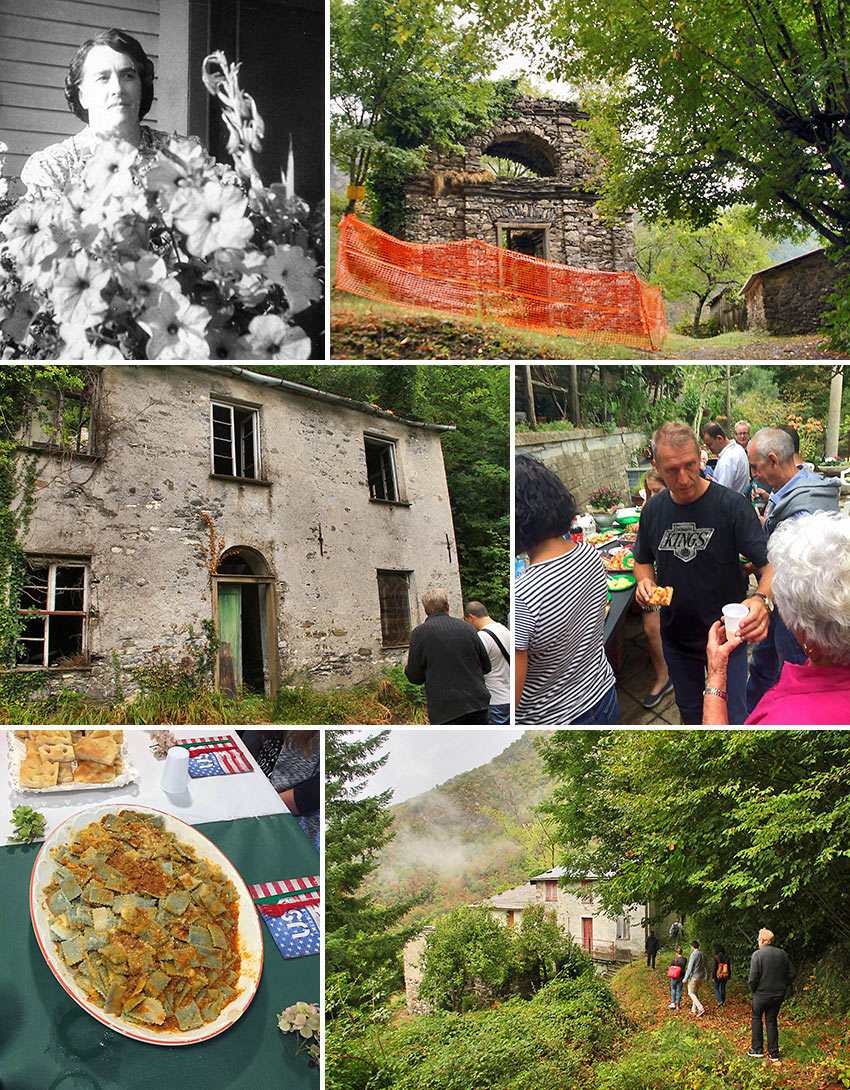
Ed Boitano — T-Boy editor:
Arena, Province of Genoa, Italy
Adelina Boitano was born in a simple home in the hills of Arena, Italy, the province of Genoa in 1902. She was the oldest daughter of a family of ten surviving children. She was also my grandmother (Italian, nonna).
Adelina’s mother Luisa Biggi was a domestic and cook for a wealthy Genoese family. Adelina commented that due to this profession, My mother knew how to speak with rich people. Yes, things were different then. Luisa was also a maestra in the kitchen, handing down delectable regional recipes to my grandmother who in turn handed them down to our Seattle family. To make extra money, our great grandmother sold roasted chestnuts to workers at the great Port of Genoa. Her favorite customer was a longshoreman named Bartolomeo Boitano, whose job was to load valuable stones of slate on vessels, quarried from the mines of Arena and throughout the Fontanabuona Valley. They married and moved to his ancestral home in Arena, a converted barn, next to the house which eventually became their new residence. As the Boitano family grew he continued his job at the port, only coming home once a month with his salary; a day long journey by bus, train and foot.
During Bartolomeo’s absence, Adelina and family subsided on vegetables and corn for polenta grown in their terraced farm in the hills, with the occasional long walk to down to the larger village of Favale di Malvaro for sundries. Arena itself was basically a settlement of ten or so households and a diminutive chapel with barely room for an altar. After WWI, with virtually no economic opportunities in Italy, three of Adelina’s brothers emigrated to Chile, while the other siblings moved and raised families in Favale.
Adelina Boitano at the age nineteen boarded a vessel byway of Ellis Island to Seattle for an arranged marriage to a man she had never meet. Life in Seattle was both happy and sad: Her husband was a philandering brute who regularly beat her; the birth of her first son, my father Louis (Luigi); finally a divorce, a Roman Catholic sin in which she was too ashamed to inform her family in Italy; living in a shack with young Luigi, while working the fields in Fife and Puyallup, Washington; saved by marrying the kindly older gentleman, Johnny Bogny (in reality Giovanni Bogni, whose name was inaccurately recorded by an Ellis Island official) with whom they soon had a son, Aldo.
My Pilgrimage: Sacred Destination officially commenced when our parents, Louis and Carol, treated our Seattle family to a life-changing trip to the province of Genoa to meet our Italian family. It was a monumental occasion, particularly for my father upon meeting uncles, aunts and cousins, with whom he had only heard stories about from Adelina throughout his childhood. It’s almost a cliché to say Italians are warm and passionate, with a strong sense of family, but were unprepared for the heartfelt greetings we received. My cousin Daniela openly wept upon our first meeting. Her sister, cousin Antonella took English language lessons in preparation for our arrival. Cousin Paolo would arrive at our accommodations at dawn with freshly baked rolls, bread and focaccia. Evenings were spent at their homes dining on special five-course meals of Genoese specialties. Cousins Cesare, Filippo and their mother, Daniela, escorted us to attractions throughout the province, dedicating every waking moment to our whims. The big day arrived when our relatives orchestrated a trek up to Arena. The once former village is now a ghost town, lined with dying buildings. The landscape, though, is remarkably well maintained with Paolo making regular visits to the village, monitoring its existence. Now too dangerous to enter various rooms in the once family home, Paolo pointed out the window that led to the bedroom that Adelina shared with her sister, Linda. Paolo’s father, Nando, was also born in the residence. We took photographs, stood in awe of Arena’s stunning location in the hills and tried to imagine what a hard life it was for them. Some of us collected pocket-sized pieces of slate to take home to the US. Today the slate mined in the area is used to make the finest of billiard tables in the world.
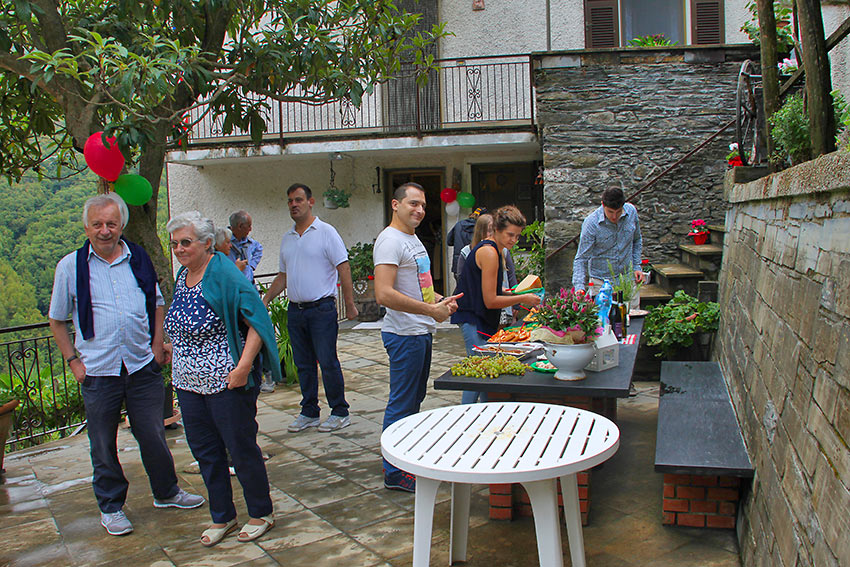
We then walked down to our fleet of cars to transport us to a festive family celebration in the nearby town of Lorsica, where all family names originated from Boitano. We were greeted with applause and smiling faces, complete with gifts, balloons, Italian and American flags – also decorated on plates, napkins and a mouthwatering cake – as well as Genoese family dishes, with the centerpiece a plate of ravioli made by our cousins, the sisters Alma and Andreina. We all commented that it tasted just like our Grandmother Adelina’s recipe. Indeed, food lineages keep familial traditions alive. My father later said that it was the first time in his life where he felt a profound sense of belonging.
POST SCRIPT: Adelina’s Christmas Remembrance
On the Day of Christmas Eve, our family would walk down to Favale to have dinner in a restaurant and attend Midnight Mass. In the darkness of night, we would head back up to Arena, laughing and singing songs. On Christmas Day we would prepare our meal of celebration: ravioli as a first course, a secondi of roasted pork and buttery potatoes, string beans and salad. Wine and aqua-vino for the children. Everything good! In mid-afternoon we would snack on freshly backed focaccia to hold us over for dessert: cakes, biscotti and torrone; rarely eaten during the year.
This very menu was served on our Nonna’s Christmas Day table in Seattle. My brother James and I would arrive at her house to assist her on December 24. Since Adelina’s passing at age 94, my father Louis and mother Carol; sister Barb; brother James; later my wife, Deb, niece Brianna and nephew Nigel would recreate this menu. We might have missed a few things, but what we may have missed was made up with love.
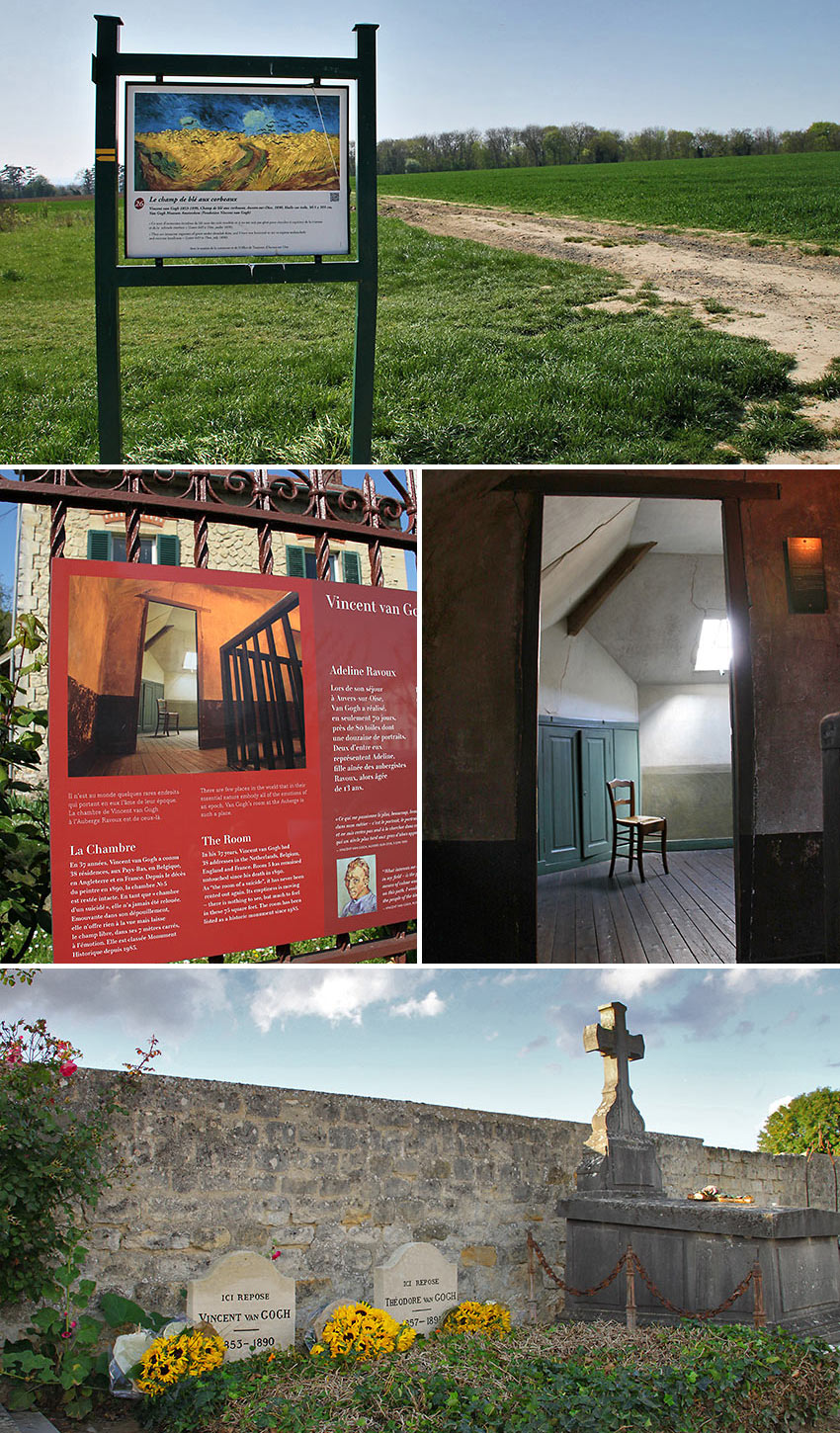
Deb Roskamp — T-Boy writer:
Vincent van Gogh: Final Days in Auvers-sur-Oise
Ask the general populace to name a famous painter, and they’d probably say Dutch painter, Vincent van Gogh. Today his paintings command staggering purchase prices, with his Portrait of Dr. Gachet, painted the last year of his life in Auvers-sur-Oise, selling for 152 million dollars in today’s currency.
I had for a long time wanted to visit the charming French village of Auvers-sur-Oise, just 16.9 miles by train and a world away from the riveting pulse of Paris. This is where Van Gogh spent the final two months of his life; a period of intense prolificacy, creating over 80 paintings and 64 sketches. Many are considered masterpieces, such as Crows over Wheatfield, Portrait of Dr. Gachet and Church at Auvers. I finally journeyed there and walked the self-guided Vincent van Gogh Trail. One simply follows the path along which many of his works were painted. Posted landmarks, which feature a reproduction of one of his paintings, overlook the exact place where he painted it. It’s mesmerizing; you actually see what he saw when painting one of his many landscapes or village streets. I was surprised that not one of Van Gogh’s original paintings was on display in Auvers-sur-Oise, but one can clearly feel his spiritual presence. You’ll see the modest village houses, the town hall and the church, Notre-Dame-de-l’Assomption, pretty much unchanged since van Gogh painted them.
The pilgrimage continued with the much anticipated tour of van Gogh’s modest attic room in Auberge Ravoux where he reportedly died from a self-inflicted gunshot wound. Often called The House of Van Gogh, the room has remained vacant since his death; not because it was where van Gogh took his last breath, but due to the French superstition of never renting a room where someone has died. There was a sense of hushed reverence as our small group followed our guide up the stairs. As we quietly assembled in the little room, I felt that I already knew this Spartan-like dwelling from Vincent’s paintings. Along with his quarters in Arles, it is one of the most famous rooms in art history. But to see it, stand in it and feel it moved me to the depths of my soul. Our guide gave a heartfelt account of Vincent’s last two days in the room – so heartfelt, that she actually wept.
A final walk up a little hill leads to the cemetery where the unassuming graves of Vincent and his art dealer brother Theo, who had supported him most of his life, are buried side by side.
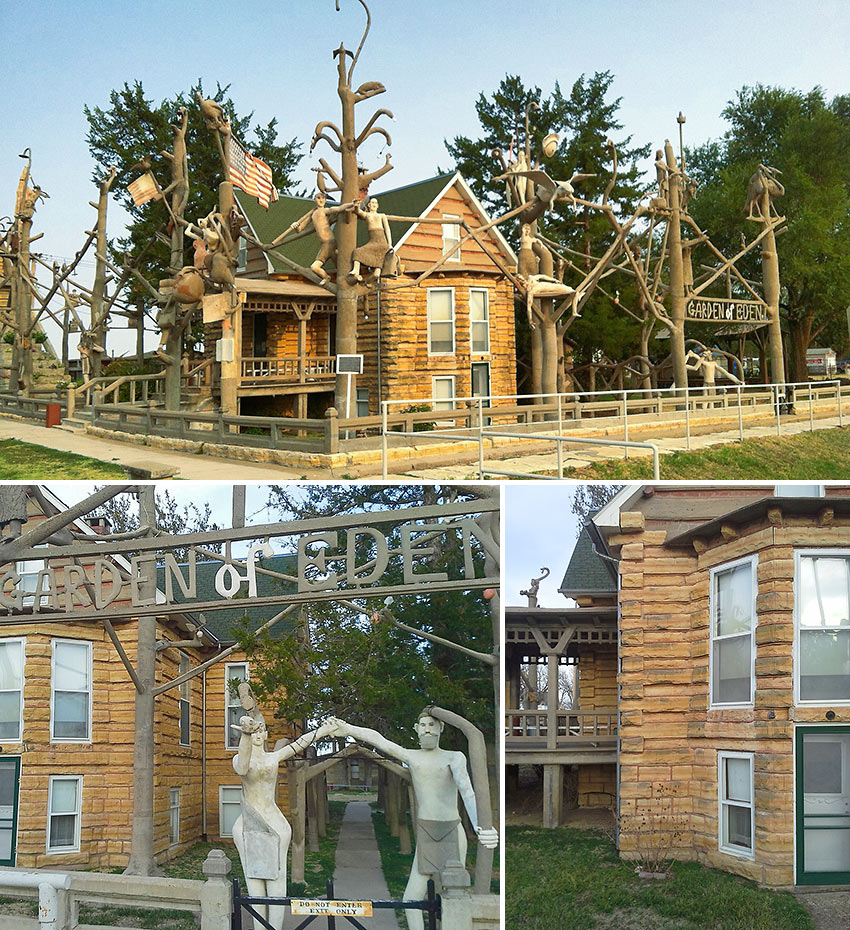
Skip Kaltenheuser — T-Boy writer:
The Garden of Eden, which if you didn’t know is in Lucas, Kansas
You’re no doubt familiar with at least some of the sacred pilgrimages awaiting those heading into the Wild West of Kansas. Going southwest from Lawrence – ground zero for Bleeding Kansas, there is Greensburg, famed for the world’s largest hand dug well. That’s a bit of hyperbole, as is the world’s largest pallasite meteorite, also on display at the Big Well, no word on if it’s from Krypton. But things are relative. After Greensburg was completely leveled by an EF5 tornado in 2007, the town was rebuilt as a model “green town” and may have legitimate claim to being the greenest town in America. Smaller now, but green. From there it’s a short hop to pay one’s respects at Boot Hill in Dodge City. Backtrack some and head north, past Russell, where Bob Dole got a beachhead on the world and in politics, to Cawker City, where the world’s largest ball of twine awaits your awe. Head west and there’s Nicodemus, the only remaining western community established by (African Americans fleeing oppression after the Civil War. Imagine the history. Some of its first settlers arriving in the harsh setting in the 1870’s owed their survival to benevolent Osage Indians. But before the double whammy of the Depression and the Dust Bowl left most of it to blow away, Nicodemus thrived, reaching over 500 residents.
Within these powerful karmic trajectories, within this Kansas zigzag take on the Bermuda Triangle, is Lucas, home to the Garden of Eden.
My eyes first feasted upon the Garden in the early seventies, traveling the winter bleak of Kanas with frequent travel sidekick Mick, then of Mick’s Bikeshop in Lawrence, now the shop and online Lawrence mogul of Footprints Birkenstock and various accompaniments and observations of historical oddities. We were en route to the ski paradises of the Rockies when Mick suddenly ordered a detour from our hundred mile an hour dash across Kansas 70, up 232 past the Wilson Lake, the clearest lake in Kansas, on a scenic byway to the intersection of 18, there lies Lucas. Why not?
And once you really focus in on the Garden of Eden, it will reward you with proper and reverent frame of mind. Shamans are where you find them. All over the midwest are remnants of visionaries with often isolated surroundings who cobbled out the time to express themselves, perhaps at times to stave off madness, other times to embrace a bit of it.
To capsulize the history of Samuel Perry Dinsmoor is to open a puzzle box for which solutions are mostly imaginary. Briefly: after serving as a nurse in the Civil War experiencing the horrors of 18 major battles including Gettysburg and the capture of Robert E. Lee, and somehow wrangling two civl war pensions, S.P, absorbed the free-thought and scientific theories propounded in lectures in common in Masonic halls and in a number of secret societies, farmed some, taught school some, married an Illinois widow with two kids and had five more, moved to Lucas in 1888, did some impulsive moving about and then returned. After his wife’s death in 1917 he hired a Czechoslovakian housekeeper, quite a looker, whom he eventually married when she was twenty and he was eighty-one, and had two more children. Legend is that several years after his eyesight failed he determined to lay down and move to the next realm at the age of 89.
So, the Garden. After retirement in 1907, 64-year old Dinsmoor started constructing a twelve room log home. When one gets close, one sees the logs are actually cut slabs of Post Rock limestone, some are 21 feet long. Inside is inlaid work with oak, redwood and walnut, no patterns repeating. He then molded 113 tons of cement around steel and chickenwire to build 40-foot tall trees and the sculptures they supported, signaling his his world view of spirituality, interpretations of the Bible, civilization and populism, including perils posed by those who drag down the common man. He lightened the heavy themes of his creation by infusing it with humor. He ceased adding to his 200 sculptures in 1928 when his eyesight failed.
There was a bit of PT Barnum in Dinsmoor, evident when he was first married on horseback. Among his creations is a mausoleum where his first wife, Frances A. Barlow Journey, rests. But the money shot is Dinsmoor’s mummified remains, on view in a concrete coffin behind a glass wall. His joke while building it was he’d see if you paid a buck admission and give you a wink. I think his beard kept growing, it was pretty long when I saw him. Not all the locals were on board, some of those who couldn’t take a joke tried to run him out of town, but it is the Garden that keeps Lucas on the map.
The tenets of free-thought and deism, popular among some of America’s founding fathers, held that any issue in life should be dealt with in a rational manner without resorting to emotional responses or to the dictates of tradition or religion. Dinsmoor’s creation ought to be Mecca for adherents to the true populist movement spawned in Kansas in the latter 19th century, in part by Civil War veterans still troubled by what they’d witnessed and also looking for ways to address the economic injustices all about them. It’s evident in sculptures such as the crucifixion of Labor. Said Dinsmoor, “Labor has been crucified between a thousand grafters ever since Labor begun, but I could not put them all up, so I have put the leaders – Lawyer, Doctor, Preacher and Banker. I do not say they are all grafters, but I do say they are the leaders of all who eat cake by the sweat of the other fellow’s face.” I’ll be getting into the weeds of such populist themes in a forthcoming review of Thomas Frank’s intriguing new book, The People, NO. Catch a self-guided tour of the Garden and some of S.P.’s words.
I knew immediately that if I ever started a religion, I’d call it Dinsmoorism. Some disciples may already be laying the groundwork. The Garden of Eden has been a magnet for creativity, and Lucas is now known as the grassroots art center of Kansas, collecting many creations by self-taught artists, usually prolific in their later years, often driven by a vision and using whatever recycled items are on hand to create what their visions demand.
The next time you’re barreling across Kansas, check in with S.P. Dinsmoor.
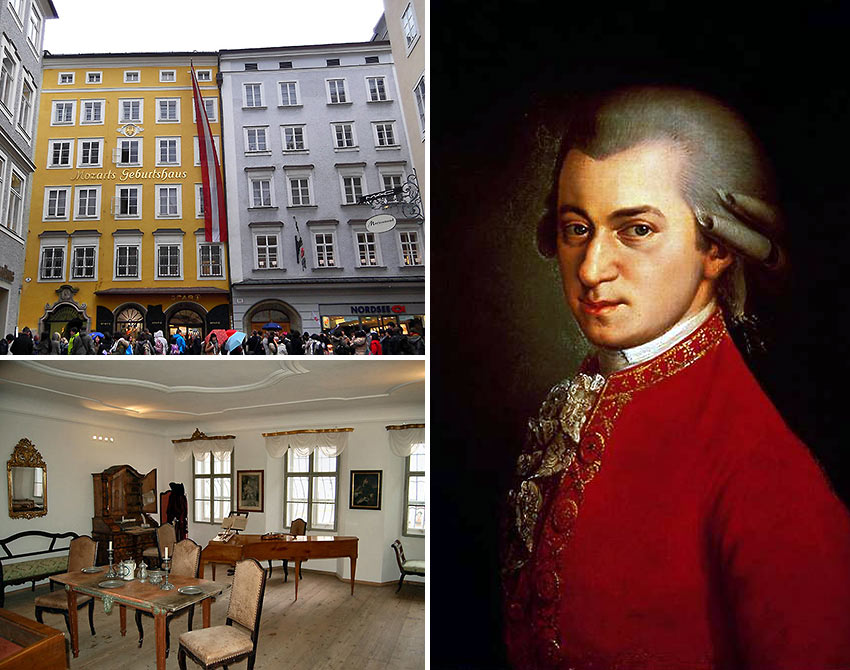
Ringo Boitano — T-Boy writer:
Mozart – Salzburg, Austria
Johann Chrysostom Wolfgang Amadeus Mozart could read and compose music, plus play the violin and piano, when he was five years old. Born into a musical family in Salzburg, Austria (then the Holy Roman Empire), he had a unique ability for imitating music, which first became evident when he recited a musical piece by simply observing his father conducting a lesson to his older sister. This led to a childhood on the road, where the young prodigy performed before many of the royal courts of Europe. At 17, no longer a child prodigy, he returned to Salzburg and accepted a post as a court musician, but was frustrated with the poor salary and lack of opportunities. His early travels and uncanny memory, though, had provided him with a plethora of musical styles and experiences, from which he used to build his own compositional language. He eventually settled in Vienna where he achieved fame, and is now considered one of the most influential and prolific composers of the Classical era. Mozart was never happy with his career in Salzburg as he experienced little fame; however, the city today is a Mecca for all things Amadeus. An essential stop is a visit to Mozart’s Geburtshaus (birthplace).
The house is where his parents lived for 26 years and young Mozart was educated. Now a three-story museum, it is filled with original instruments – Mozart’s childhood violin, concert violin, clavichord and pianoforte – as well as portraits, family letters, and furniture, including Mozart’s very cradle. I strongly recommend a private tour, where guides are walking encyclopedias about his life. I asked why were Mozart’s famous eyes so bulging? He didn’t eat his vegetables!
Another Mozart must is a dinner concert at the famous Stiftskeller St. Peter, considered the “oldest restaurant in Europe.” The concert is performed by candlelight between food courses, prepared with traditional recipes from Mozart’s era. Period-costumed musicians, including two opera singers, perform arias from “Don Giovanni”, “Le Nozzi di Figaro” and “The Magic Flute.” Dining under magnificent chandeliers and surrounded by 18th century décor, not to mention the stirring music, is like being transported back to the magical times of Mozart.
The setting in Salzburg, itself an enchanting fairytale of a city, only enhances the experience. A UNESCO World Heritage Site, the city’s wealth was built on the mining of salt (‘salt’ translates to ‘salz’ in German, hence the city’s name). The west bank of the Salsas River borders the Alborg Historic Center (known to locals as the Altadt), and is where most of the attractions are located. The fortress Festung Hohensalzburg towers over stunning baroque architecture and narrow cobblestone streets where smartly dressed locals sit in elegant coffee houses, noshing on delicate pastries and Mozartkugln (Mozart chocolate balls).
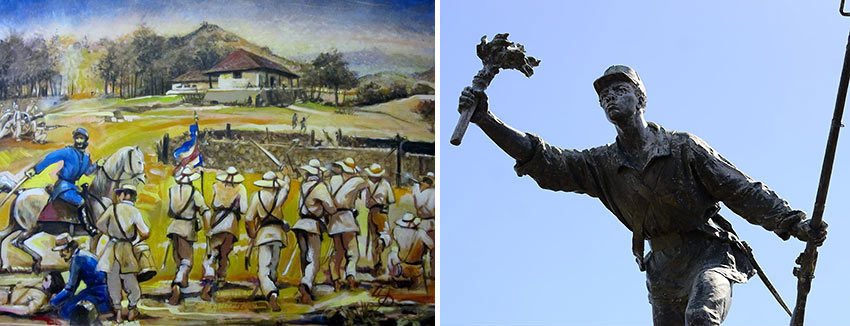
Phil Marley — Poet:
Juan Santamaría — The Little Drummer Boy of Costa Rica
The American tyrant William Walker and his ragtag army of mercenaries attacked Honduras, Nicaragua and later Costa Rica, then part of Nicaragua in 1856. Walker’s intention was to create slave-holding empire with himself as its president. With the blessing of US President Franklin Pierce, Walker was successful in Honduras and then turned his sights on Nicaragua, making himself president. This was followed by a march down to what is today’s Costa Rica. President Juan Rafael Mora Porras called upon the general population to take up arms and head north to fight against the foreign invader. After routing a contingent of Walker’s soldiers at Santa Rosa, Costa Rican troops continued marching north, following Walker’s army to the city of Rivas. The Battle of Rivas was both fierce and brutal, and Walker’s men retreated into a hostel near the town center where they commanded an advantageous firing position. Juan Santamaría, a poor laborer and son of a single mother, had joined the army as a drummer boy. A general suggested that a soldier should advance towards the hostel with a torch and set it on fire. The barefooted Juan Santamaría volunteered for the suicide charge, but with the condition that someone would look after his mother if he died. He then advanced and succeeded in setting fire to the hostel, but was mortally wounded by the enemy. His heroics were the defining factor in the Costa Rican victory at Rivas. Walker escaped and headed back to the slaveholding US for protection. He eventually returned to Honduras in an attempt to reestablish his control of the region, but was captured and executed by a firing squad in 1860. Juan Santamaría, the Little Drummer Boy, is Costa Rica’s national hero. I paid witness to monuments, statues, parks and an airport named after him throughout the nation. Juan Santamaría Day, a national holiday is held every April 11 to commemorate his courageous death, celebrated throughout the land with marching bands, parades, concerts, and dances. This selection is not just to pay homage to Juan Santamaría for his self-sacrificing feat in battle, but also as a son who loved his mother.
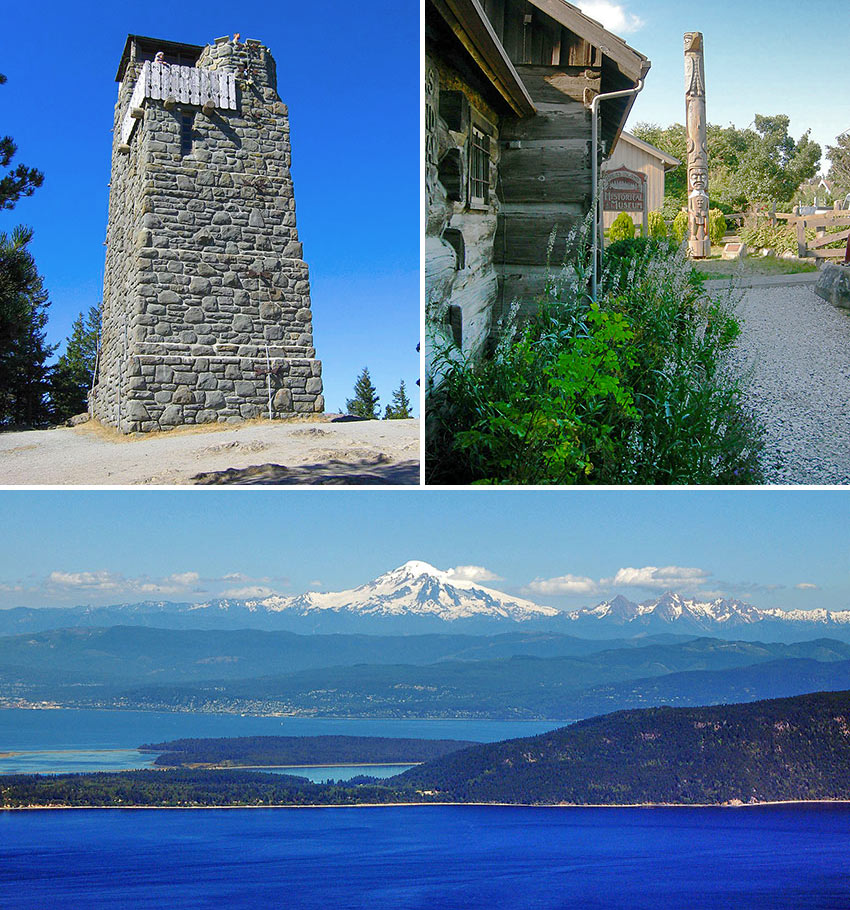
Brent Campbell — Musician & composer:
Orcas Island, Washington State
When I was seven or eight years old, and for the next two summers, I went door to door selling toffee covered nuts for $1 per can (delicious!). Once I sold 20 I earned a one week trip to YMCA Camp Orkila on Orcas. After all these years I still cherish those three “independent “ trips to one of the most beautiful islands anywhere. I have been back a few times over the years and Orcas Island will always remain a sacred destination.
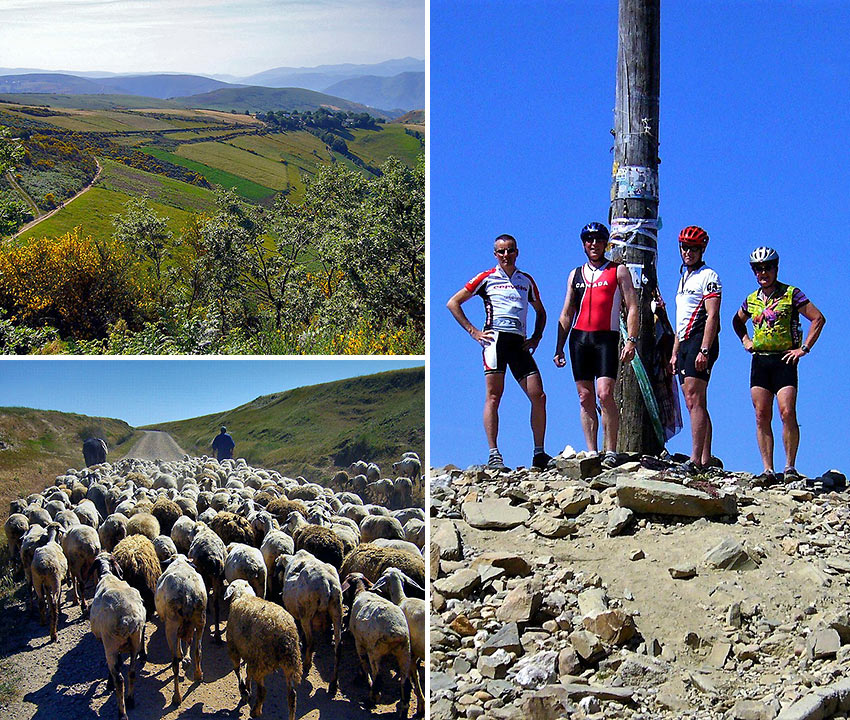
Tony Chisholm — The Canadian Connection:
Memories of the Camino
A few years ago, four intrepid explorers from Ontario Canada joined eleven others for a 500+ K cycle along the Camino de Santiago pilgrim trail in Northern Spain.
The rental mountain bikes are heavy and the climb days which we are just starting, range from 600- 1500 meters. It certainly is an excellent work-out. Tomorrow will be the longest climb of the trip. In the heat it is difficult to get enough water and fuel for these climbs. Fortunately, there are lots of medieval towns along the way with bars and hostels.
We passed so many thousands of Perrigrinos. Most walk alone. Some walk 20 K a day, others try to achieve 30 a day. Most talk of resultant leg injuries and foot problems. Some take months to walk hundreds of kilometers. Some do a portion of the route each year. Everyone walks for his or her own reasons. On they plod. We noticed many got up by dawn or earlier to get miles in before the heat of the day. There are lots of towns along the way with stores and bars to feed the Perrigrinos. Every village seems to offer them something. It is all condensed for us on bikes moving quickly, but for the walker, I’m sure the towns and restaurants don’t come often enough.
The Perrigrinos have developed traditions that are interesting. Such as the tradition of carrying a rock all along the route. As if the back packs weren’t heavy enough! This rock represents “their burden” that they carry with them wherever they go. Along the route, near the top of one of the passes is a large iron cross. At the base of this cross tradition says people can cast away their burden (rock). Now after many years, the hill of rocks under the cross has risen over a large area to a hill 20 feet or more in height. Many rocks are painted or written on. It seems to represent a million burdens. What a wonderful tradition.
Finally, on the last, “easy” day, we experience a few short but surprisingly tough hills and a wonderful trial ride through eucalyptus glades. At last! Santiago and the cathedral – in time for the Perrigrino mass at noon.
Later that day there is definitely a feeling of disappointment that the trip is over and done. But imagine how the Perrigrinos must feel after walking for months. They must continue walking for many more months in their dreams!
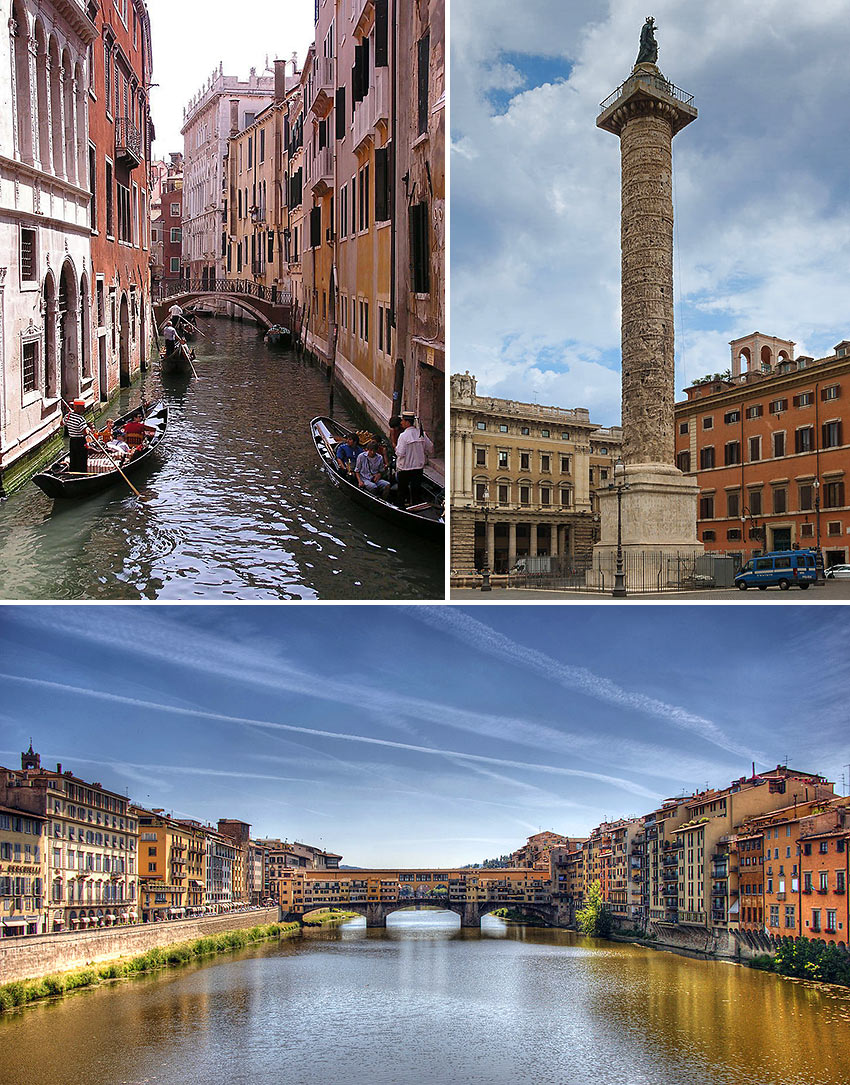
Raoul Pascual — T-Boy illustrator, webmaster & co-owner:
Florence, Rome & Venice, Italy
I promised my wife that I would bring her to Rome, Venice and Florence one day. She’s been to Europe with her gal friends and she wanted to go to Italy, but she remembered my promise and is holding me to my word. I am still saving up so I could fulfill our dream.

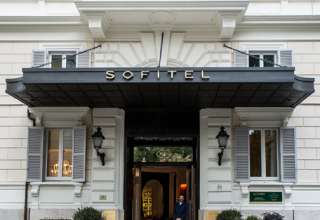

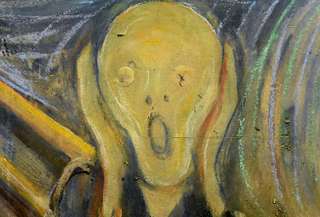
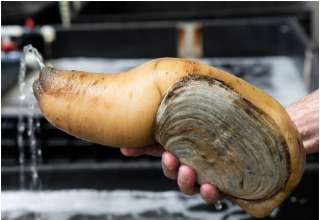




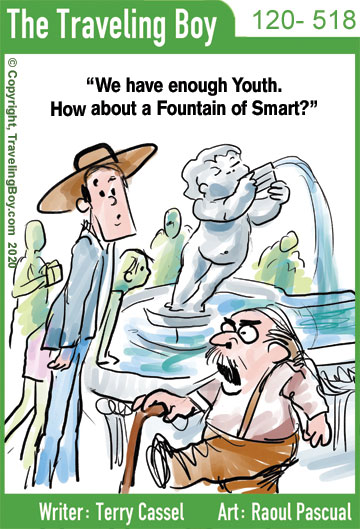














John Clayton
January 8, 2021 at 1:09 am
Excellent, indeed VERY GOOD indeed. Congrats over and above.